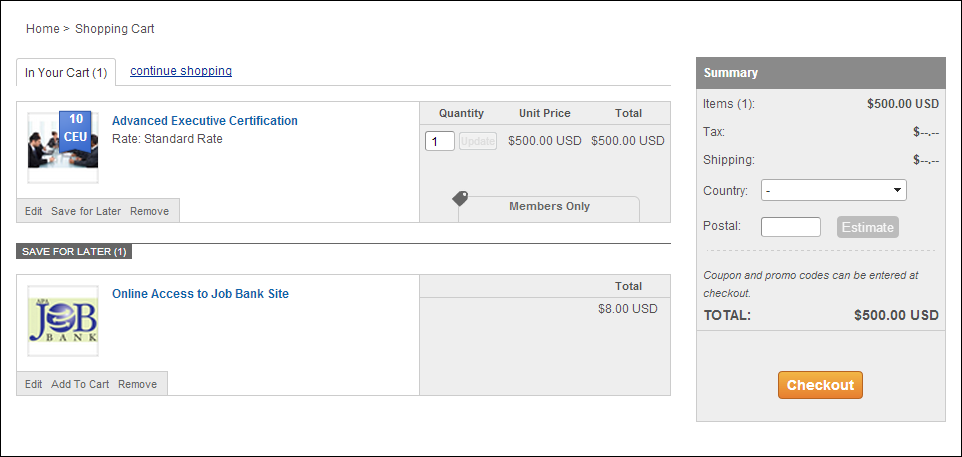
The Shopping Cart provides a number of valuable features that include the following:
· Detailed Cart Summary – Web users can easily see
what is in their shopping cart with relevant information about those items,
such as pricing, thumbnail images, etc.

· Cart Management – Web users can update the specific
items in their cart, changing quantities or removing items altogether
in a user-friendly manner, and easily access the full product detail for
any item in their cart.
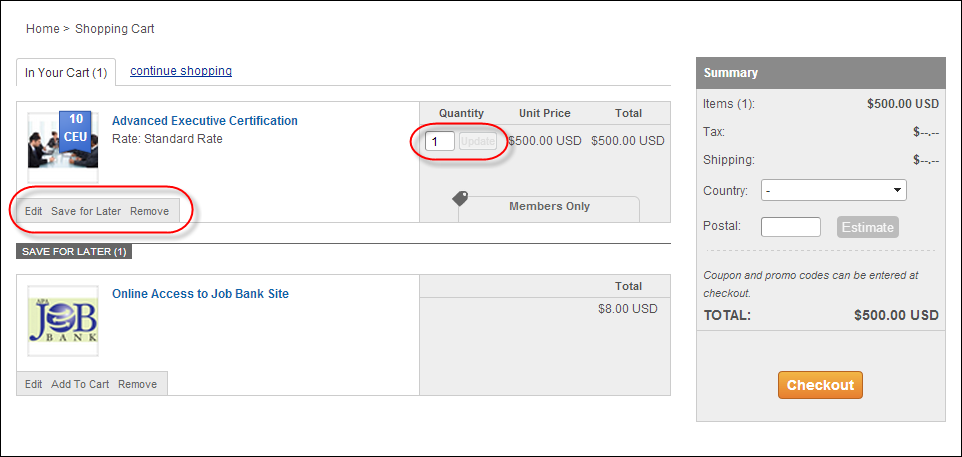
· Save for Later – The cart provides the ability
for a web user to move items out of their cart into a special queue for
purchasing later. They can also see items that are in this saved
queue directly on the screen so they can add them back to their order
easily.

· Specialized Item Management – For some items,
the cart allows web users to change the characteristics of those items
without having to remove and re-add the items from scratch. For example,
a web user can switch a book from print to digital, or modify the size
of an apparel item. For a meeting registration, they can easily modify
their badge information. Subscription terms can be changed as well, such
as from one-year to two-year.
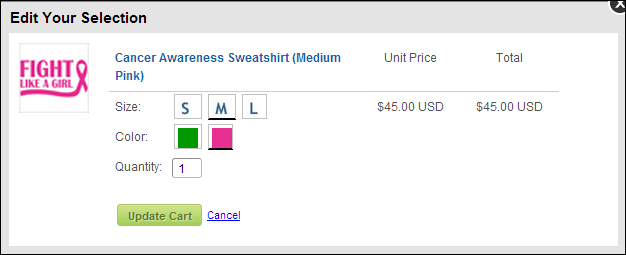
· Component Support – If the web user has a package
product in their cart, they can see the components of that package without
having to leave the cart. Free components associated with other products
and membership subscription benefits are displayed in a similar manner.

· DCD Support – If the web user has a Digital Content
Delivery (DCD) item in their cart, they can see which files they will
be able to access.

As of 7.5.0, the new universe, All Order Entry in Data Analyzer, allows you to run queries to see what products your web users have in their carts including products that were added to the saved for later section. See Social CRM Universe for more information.
In addition, you can create a notification for items in the shopping cart for more than X amount of days, which will send an email to the web user with a link to his/her shopping cart to encourage purchase of those items. See Notifications for more information.
The Shopping Cart page is composed of the following three controls:
· Shopping Cart Summary Control
· Shopping Cart Savings Control
 These controls can be configured to be
responsive to mobile
users. After adding the responsive CSS to this page, your mobile users
will see the responsive Shopping Cart page similar to the one displayed
below. For more information
about using this control on a responsive page, please refer to Configuring
Responsive CSS.
These controls can be configured to be
responsive to mobile
users. After adding the responsive CSS to this page, your mobile users
will see the responsive Shopping Cart page similar to the one displayed
below. For more information
about using this control on a responsive page, please refer to Configuring
Responsive CSS.
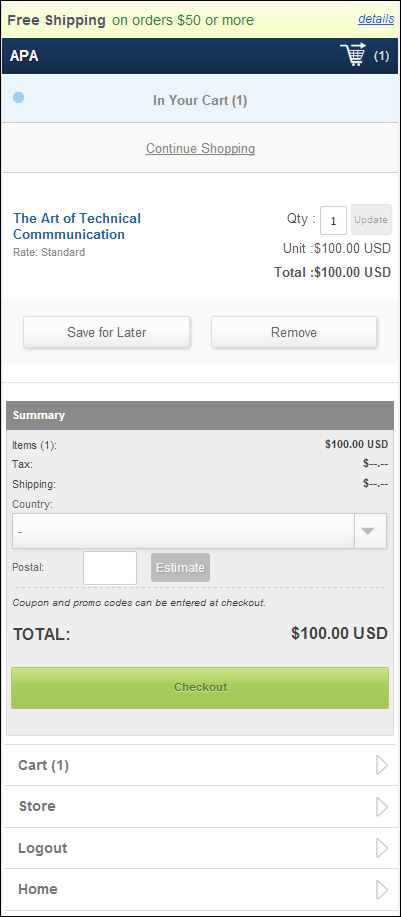
After configuring the Shopping Cart controls, your web users will see a Shopping Cart page similar to the one displayed below. As a best practice, it is recommended that setup your page to have two columns. In the left column, you should drop the Shopping Cart control and in the right column, you should drop the Shopping Cart Summary control and the Shopping Cart Savings control, as shown below. In the right column, the Shopping Cart Summary control should be placed above the Shopping Cart Savings control.
 For
a video demonstration on how to set up the Shopping Cart page, refer to
Video
Demo: Creating the Shopping Cart Page.
For
a video demonstration on how to set up the Shopping Cart page, refer to
Video
Demo: Creating the Shopping Cart Page.

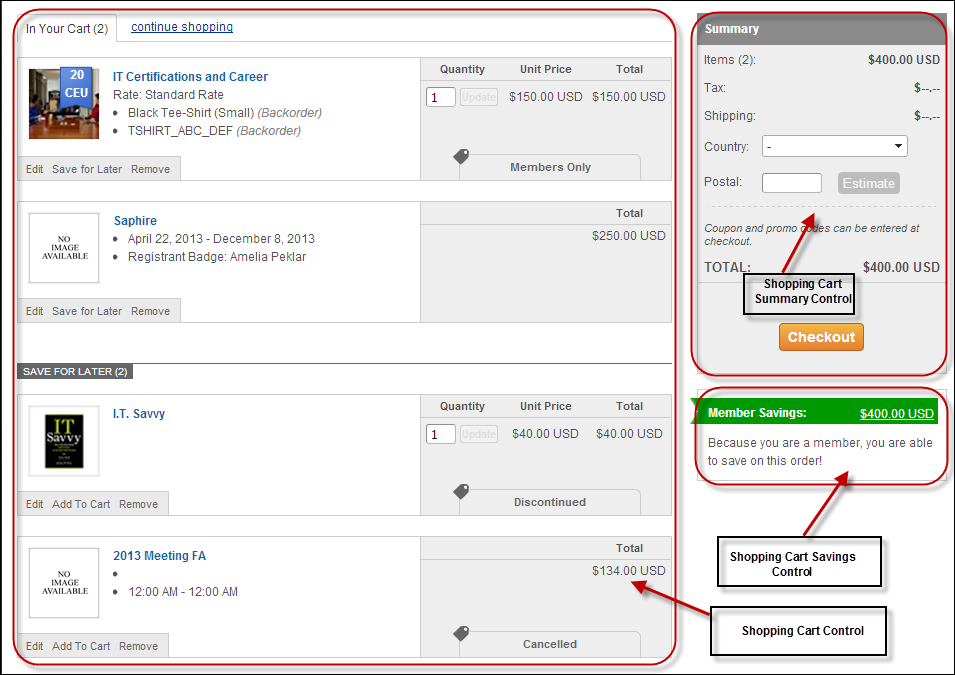
See Also:
· For some Frequently Asked Questions about the Shopping Cart controls, see Frequently Asked Questions for the Shopping Cart Controls.